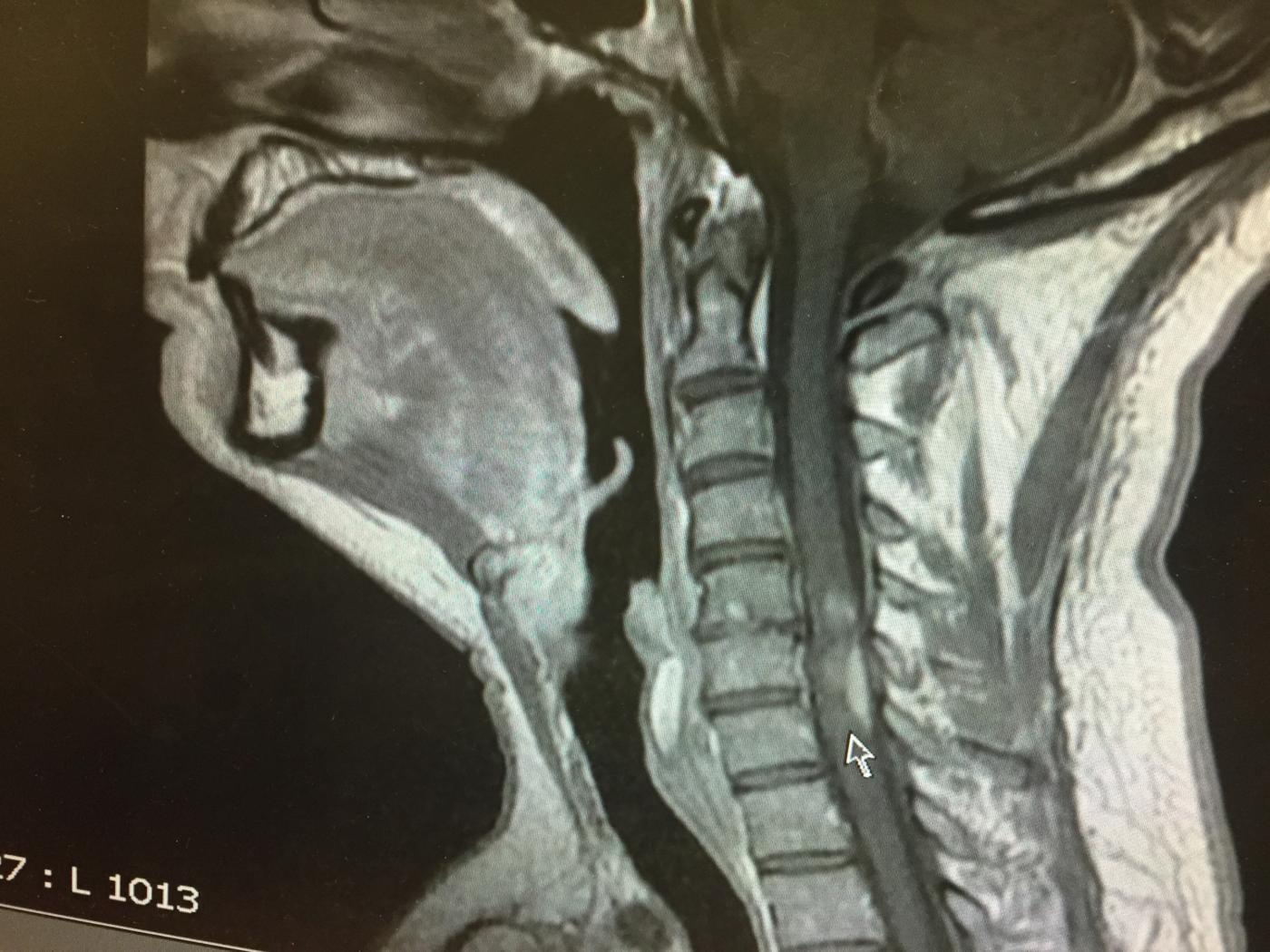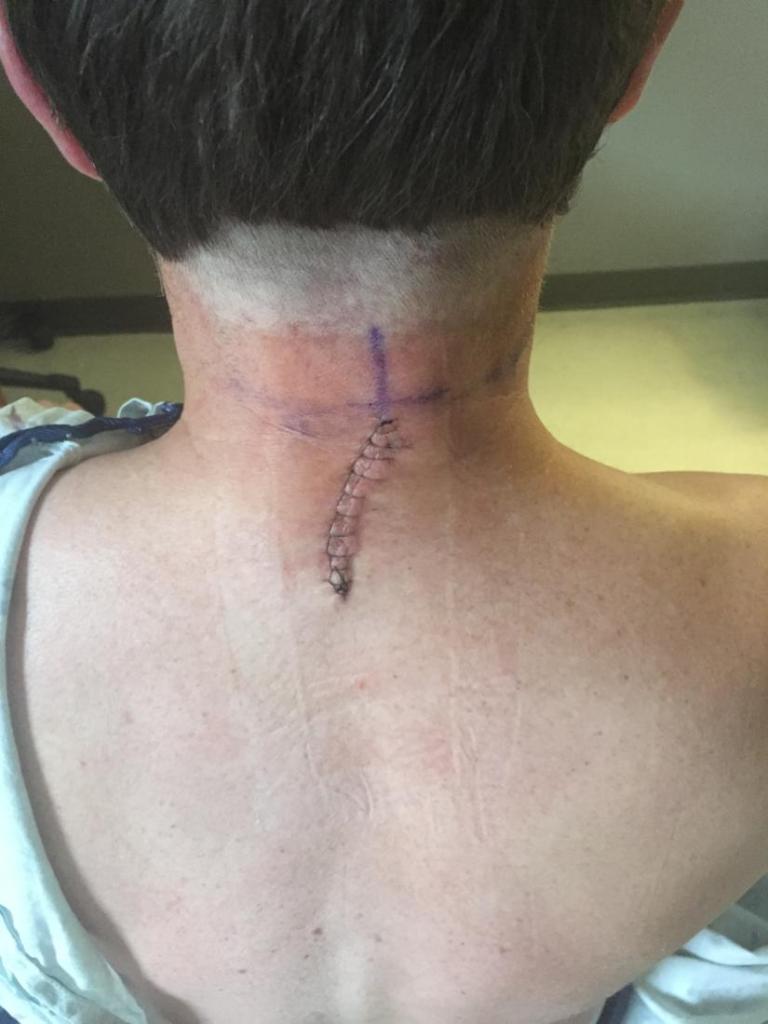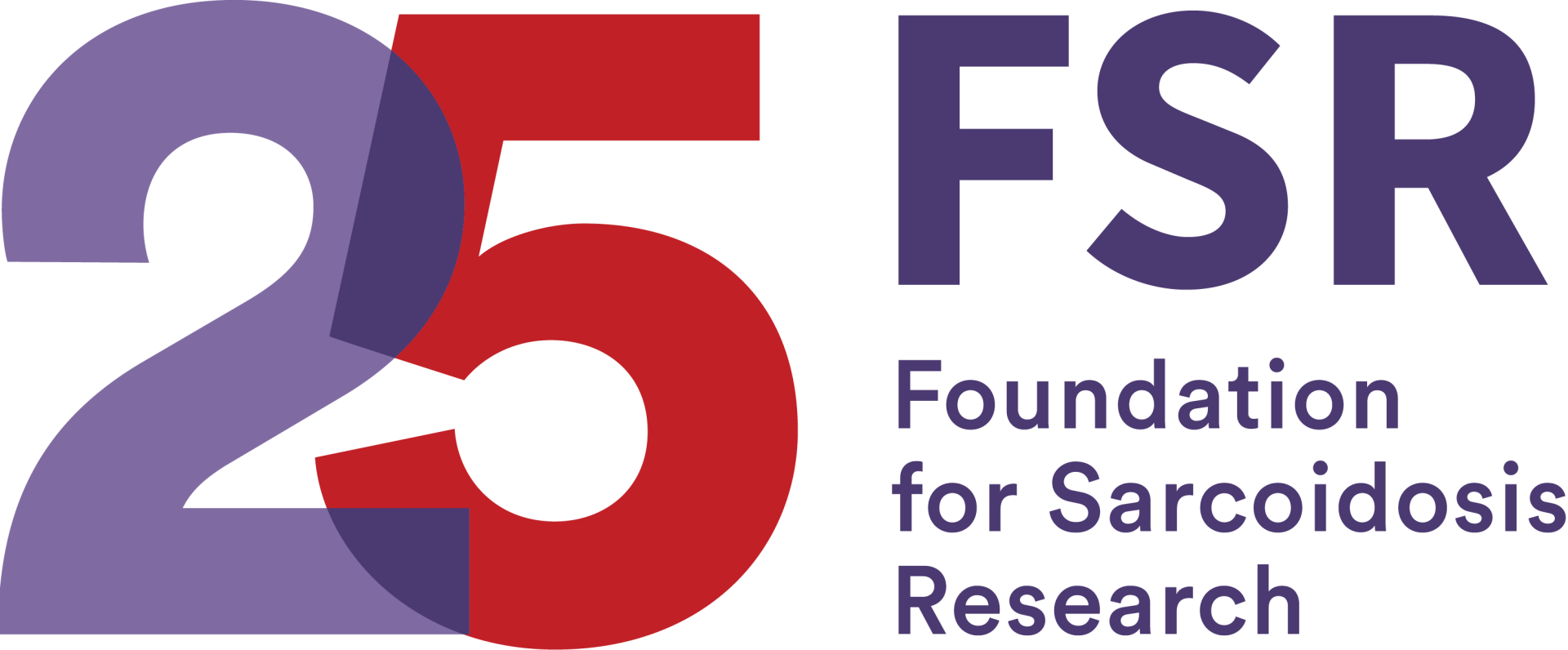John Carlin is an award-winning news anchor currently working at WSLS 10 in Roanoake, Virginia. He’s also an avid cyclist, a strong pillar of his local community, a loving husband and father, and a sarcoidosis warrior. Several years back, John began experiencing troubling symptoms that led to a diagnosis of sarcoidosis in his spinal cord. As a serious sportsman, John was concerned about his diagnosis’ affect on his outdoors hobbies- particularly cycling. He’s used riding his bike as a way to overcome some of his symptoms and the side effects of medications- especially prednisone. When John realized there was a lack of information online about sarcoidosis and active athletes, he took to his blog to share his story with the hope that it would help others. With hard work, patience and a good support system of family and friends, John has returned to his intense cycling routine. Follow along with his journey at Carlin the Cyclist!
Looking back on 2016, I should be proud of all the miles I logged, the places I rode and the general sense of accomplishment. But looking back I still see it as the year that wasn’t, a year tarnished by a condition known as sarcoidosis.
The onset of sarcoidosis
I remember being at work one day and thinking my socks were balled up on the bottom of my feet. I slipped my shoe off and was surprised to find that my socks were just fine. I shrugged it off and went on with my day. It’s not like it was painful or anything. I figured it would go away. But within a week the sensation had traveled to both feet and sadly I was to learn that it would never go away. In fact, it would get worse.
The worsening presented itself in the form of numbness that slowly crept up my legs over a period of months. I went to my doctor, who sent me to a neurologist. The neurologist diagnosed me with a condition called transverse myelitis – an irritation of the area surrounding the spinal cord.
But as 2015 went on, it became apparent that the diagnosis was incorrect. A series of MRI’s showed the spot on my spinal cord was getting larger – which was inconsistent with transverse myelitis.
In the meantime, the numbness had crept farther north in my body, to the point that it even felt a bit odd sitting on my bike seat. Despite the sensation, (or lack thereof) there were no issues with my fitness and I enjoyed my position at or near the front of my friendly group of intermediate riders.
The doctor’s concern grew however, and he told me I needed surgery to get a look at whatever was growing on my spinal cord. The mass was near vertebra C-6 – the base of my neck. The surgery was scheduled for January 12 of 2016, and I’ve been living with the results, and sarcoidosis ever since.


Surgery
The fear was that the mass on the MRI images was a tumor. No one ever said the word “cancer” to me – but obviously that was a possibility and on the day of my surgery it was certainly on my mind.
When I came out of the anesthesia, the pain in the back of my neck was excruciating, and any movement sent searing pain throughout my body. But I was also aware that the numbness had gotten worse. Instead of stopping at my waist it now went clear to my chest, and the lack of sensation had gone from 4 to a 7 on a scale of 1-10. Great.
The good news is that it wasn’t a tumor. I found out when I was approached by a doctor who I had never seen before as I took a few steps in the hallway outside my hospital room. I guess he was the guy whose job it was to read the biopsy results from the lab. “You have a non caseating granuloma,” the silver haired doctor informed me, as I struggled for a few steps, towing my IV tower and wearing my stylish hospital gown.
“I have what?” I asked, reasonably. “A non caseating granuloma,” he replied, as if everyone knew what that was. Since my whole life was sort of hanging in the balance, I scrunched up my face and sought clarification. “What does that mean?” I asked again. “It means you have a non caseating granuloma,” he repeated. He was surrounded by about six interns or residents or whatever med students are during the time they are training to become one of the people who won’t tell you the significance of the life altering surgery you just endured.
I looked into the eyes of the med students, with an expression that said, “Does anyone else see what’s happening here? Can’t any of you see that I have no idea what this man is telling me?” Some of them seemed a bit apologetic, but no one would give me anything useful. At that moment I didn’t know if I had a benign tumor, cancer or bubonic plague. Nothing. I had endured all this pain to discover the very answer to this question and all I knew is that I had a granuloma and it was non caseating.
Within the next couple of hours, no thanks to the doctor in the hall, I learned that the most probable diagnosis was something called sarcoidosis. To be fair, that doesn’t mean much to most people. But it is easier to understand than the non caseating term, and as it turns out there are lots of people who suffer a sarcoid somewhere in their body. Those of us who have a sarcoid are said to be afflicted with sarcoidosis. Easy, right?
Often a sarcoid is not a huge problem for the patient. The problem for me was the location. Since it was on my spinal cord, it was blocking signals from my brain to the lower half of my body. Unlike a tumor, it can’t be removed. It’s more of a coating of globules that accumulate in a single place. The doctors have told me that these were coating the various “threads” that make up one’s spinal cord. The only way to attack this thing is with drugs that hopefully will shrink it, and possibly make it go away. For the record, my situation is extremely rare.
Back to cycling
Before I could ride my bike I had to recover from the actual surgery. After all, they had cut a hole in the back of my neck, broken off some bone on one of my vertebrae, tweezed pieces off my spinal cord, and then sewn me back up. As you might expect, this hurt.
And it continued to hurt. Luckily it was a typically snowy early January, so I was not tempted to ride my bike – even if I could. But I could not stop thinking about the day I might be able to pedal again. At this point it was nearly impossible to even put my head on a pillow without searing pain, so I had a long way to go.
Though the numbness stayed, the pain from the surgery eventually waned. Doctors prescribed a number of drugs to shrink the sarcoid including a steroid called prednisone. Lots of people have heard of it, or even taken it for a short period of time. It’s often prescribed, for instance, if you get a bad case of poison ivy.
At first I was excited with respect to the cycling opportunities, thinking a steroid would make me stronger. I thought I would be working the system like a major leaguer only with a prescription for my advantage.
As it turns out, that’s not how it works. Prednisone is a corticosteroid which does not make you big and strong like those used by cheating professional athletes. In fact, it makes you weaker, while inducing weight gain. The more you take, the worse it gets. Wikipedia lists adult dosage at 5-60 mg per day. I was taking 80.
As the stiffness in my neck lessened, I began to test my ability on the bike. According to my trusty Garmin I succeeded in riding 84 miles in January – a combination of stationary trainer and a dirt road ride on my mountain bike. I remember the burning at the base of my neck as I gutted out that series of short rides – thankful that I was able to ride at all. As the months went on, the rides got longer and more numerous. I managed 143 miles in February and 194 in March.
At this point, I was still healing from what my surgeon termed, “big boy surgery.” The whole notion of dealing with sarcoidosis was masked by the more painful and urgent condition caused by the hole in the back of my neck. But sarcoidosis would still have its say. It’s time was coming, but I couldn’t see it yet.
By April I was getting out regularly, thanks in part to an adjustable stem I added to my old steel Waterford. The stem allowed me to create a more upright position. Bending over in the drops and lifting my head up to look down the road, put all the pressure on the exact spot the doctors had sliced into my neck.
During this time I was still taking massive amounts of prednisone to shrink the sarcoid. I was also taking methotrexate, along with a bunch of other stuff that doesn’t seem as relevant to this blog. The prednisone, as advertised made me gain weight. My face puffed up, creating what the internet refers to as “moon face.” I was hungry all the time and ate more than I should have. The methotrexate made me feel like I was going to puke. But, the worse it got, the more determined I was to ride my bike. If there was going to be a new normal, I wanted cycling to be a part of it.
My notes from May 7 say, with respect to a 41 mile ride. “Trying to get some distance and time in — anticipating some organized rides coming up … Felt pretty good … but still don’t have the strength I’m accustomed to.” It was a harbinger of things to come.
As May moved along, I rode more and more, taking advantage of the longer days to log miles on my dinner break between the 6 pm and 11 pm newscasts. By now I was on my road bike full time and feeling pretty good. I assumed with a bit of diligence and lots of miles the only issue still in front of me was full recovery from the surgery. Every moment between me and January 12 seemed like an opportunity for more healing and better performance on the bicycle.
When the annual Wilderness Road Ride came along in the New River Valley over Memorial Day weekend, I was psyched. I do this ride almost every year and it’s a good benchmark. I can test myself against known hills — and my buddies. This year’s ride was a 60 miler where I averaged 15.6 MPH over 3,461 feet of climbing. Not stellar numbers, but not far off from previous years and far better than I expected when the day started. “A little more effort,” I remember thinking, and “I’ll be back.”
As it happens that would be one of my last strong rides of the year. By then the prednisone dosage was down from the 80 mg – but it was having an effect.
I should point out that I don’t “train.” I never have. I just ride a lot and hope to get better. Usually it puts me about where I want — a nice sweet spot where effort and enjoyment meet. But as the summer wore on, everybody else got better and I didn’t.
There was the day we all decided to climb Thunder Ridge on the Blue Ridge Parkway. It was hotter than any ride so far — in the 90’s and humid, and it about killed me. My normal group including my wife and some of her friends headed out for a short warm up and then the 12 mile climb on the Blue Ridge Parkway.After a few miles the guys I normally ride with were easily a half mile up the road. I typically have a fair advantage over my wife, but on this day she had to stop several times and wait for me. Eventually I reached the top where the rest of the group would have had time to finish a picnic lunch had they had one. I was embarrassed and exhausted in the truest sense of the word(s). My legs were cramping and I seriously considered waiting until someone could come back with a car to get me. I finished the ride, but I was miserable.This pattern would repeat itself throughout the summer. There was an amazingly hard ride from Burlington Vermont to Crown Point New York. There were two rides in Amish County in Pennsylvania and a failed attempt at a metric century in October.
In all of these rides I was either off the back, struggling to finish or both. I struggled with hills I would have climbed easily any other year. My buddies Steve and Gary had to wait for me, and seldom did I have the chance to compete in a sprint for a stop sign or whatever.
It’s not from lack of want. Despite the condition, I logged as many or more miles than many summers – I just didn’t get the results.
I found more proof in the gym where weight lifting proved my muscles had atrophied. On machines where I once lifted 100 lbs, I struggled with 50. It didn’t matter whether it was arms, chest or legs, the results were the same across the board.
The path forward with sarcoidosis
As I write this, it is early January 2017. I’m still taking prednisone but only 2mg daily. Imuran has replaced methotrexate. A drug called gabapentin is helping with the numbness, but it’s still there and I suspect it always will be. My most recent MRI from several months ago suggests the sarcoid has not grown – but it hasn’t gone away either. The doctors are watching it carefully and trying to get me off the steroid for good.
I’m back in the gym and getting stronger. Watts in spin class are not what I would like, but they are ok. I’ve been out on the road bike a couple of times when weather permitted, and even run a few miles.
I should be happy I was able to ride at all. The fact that I rode in beautiful places with great friends was a bonus. But it sure is a tough pill to swallow when you are not where you want to be and believe that you SHOULD be.
The energy and desire to succeed are still there. I’ll get out on the mountain bike as much as I can during these colder months, and hit the road when temps increase a bit. If I don’t lose the 10 pounds to get back to previous levels, then it will be my fault and not the prednisone. Hopefully neither the sarcoidosis nor the meds will keep me from enjoying the cycling year I envision.
Read more about John’s experiences on his blog Carlin the Cyclist – Be sure to check out the category dedicated to cycling with sarcoidosis!



